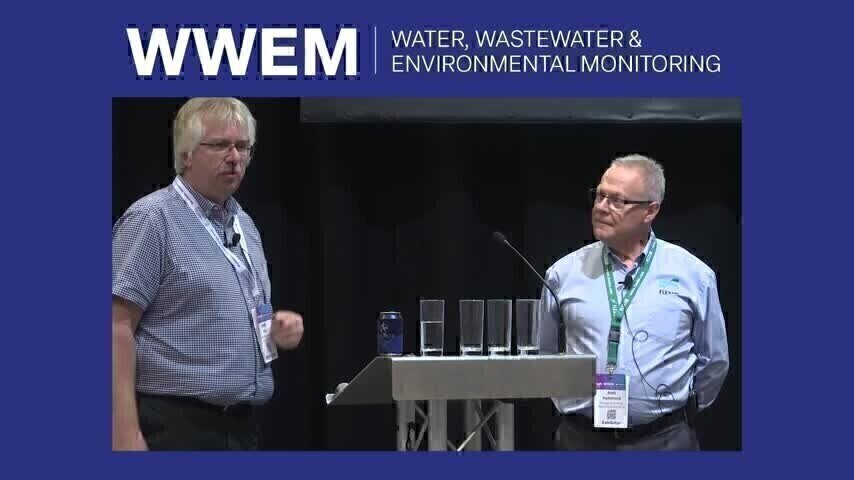E-Learning
Videos
Past Events
"The annual rate of CH4 emissions around the world are significantly smaller than CO2 emissions. The CH4 concentrations in the atmosphere are about 200 times lower than those of CO2, however, methane accounts for more than 25% of global warming. It is important to apply representative measurements that will lead to responsible worldwide estimations of CH4 emissions. The Three main anthropogenic sectors of CH4 emissions (agriculture, energy production and waste) are all characterized by:...
TOTAL and CNRS (1) through the AUSEA (2) project, developed a CO2 & CH4 sensor embarked on drone in the aim at measuring GHG (3) emissions of TOTAL's industrial operation. The sensor is a high-performance multi-gas spectrometer developed by GSMA (4) for monitoring of atmospheric concentration of GHG. Tough challenges are overcome to made it embarked on a drone: weight reduction, perturbation management, soil/air communication. For emission calculation, advanced algorithms have been developed...
Methane emissions are increasingly meaningful in public debates for political, administrative, and public stakeholders and can have significant impact on the future of natural gas. The different approaches for emission estimation in place cause difficulties to identify the methane emissions in the countries correctly and put the gas industry in a difficult situation. The GERG project MEEM (finished in July 2018) developed a methane emission estimation method for the gas distribution grid whic...
Methane is produced during anaerobic digestion in biogas plants. As methane is a very effective greenhouse gas, emissions should be avoided as far as possible, in order to ensure a clean and environmentally friendly operation. The project ""EvEmBi - Evaluation and reduction of methane emission from different biogas plant concepts"" (funded within the 11th ERA-NET bioenergy call) started in April 2018. The project is based on the findings from the previous project ""MetHarmo - European harm...
"Biogas from anaerobic digestion facilities may provide several greenhouse gas mitigation effects including fossil fuel substitution, possible balancing energy source in a supply system with a high proportion of wind and solar power, and reduction of methane emissions from manure management. However, methane losses from biogas plants are problematic, since methane emitted into the atmosphere contributes to global warming, and any losses may thus reduce the environmental benefits of biogas pro...
Atmospheric methane (CH4) has a strong short-term global warming impact and is emitted from a variety of natural and anthropogenic sources. Methane sources include wetlands, landfills, oil / gas / coal extraction activities, and urban emissions from traffic and the natural gas distribution system. Characterizing the magnitude and the origin of these fugitive emissions spatially and temporally is critical to reduce natural gas leakage and to understand their present and future climate impacts....
Methane emissions are responsible for about 25% of current global warming and the oil and gas sector is one of the largest anthropogenic sources of methane. The IPCC, in its “Special Report on Global Warming of 1.5 degrees”, noted that emissions of Short-Lived Climate Pollutants like methane and black carbon need to be reduced by 35% or more by 2050 to stay below the 1.5 degrees target, while the International Energy Agency identified upstream methane emissions as one of the most importan...
If you're looking for professional advice on methane analysis by means of open-path laser analysers or a mid-infrared tunable-diode laser spectroscope, follow the links for the relevant e-Learnings. Similarly, if you're in need of an overview of new sensor technologies for methane analysis, watch a presentation on the topic delivered by Professor Daniel Zimmerle of Colorado State University. Numerous applications from defense to geology use thermal infrared (TIR) hyperspectral sens...
With growing concerns regarding climate change in the scientific, political and public spheres, there is mounting pressure on businesses to provide accountability for their impacts on the environment. The recently published IPCC report highlighted reductions in methane emissions as a central factor in keeping global warming below the critical threshold of 1.5 oC above pre-industrial temperatures. Hence, industrial activities associated with fugitive emissions of methane may well be under incr...
Digital Edition
AET 28.2 April/May 2024
May 2024
Business News - Teledyne Marine expands with the acquisition of Valeport - Signal partners with gas analysis experts in Korea Air Monitoring - Continuous Fine Particulate Emission Monitor...
View all digital editions
Events
Jul 30 2024 Jakarta, Indonesia
China Energy Summit & Exhibition
Jul 31 2024 Beijing, China
2024 Beijing International Coal & Mining Exhibition
Aug 07 2024 Beijing, China
IWA World Water Congress & Exhibition
Aug 11 2024 Toronto, Canada
Aug 25 2024 Stockholm, Sweden and online















.jpg)








